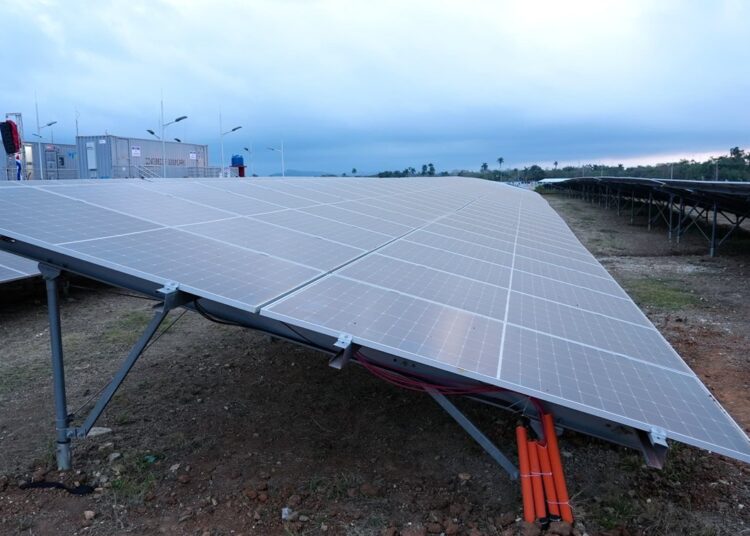The first of the 55 photovoltaic generation parks that will be installed this year in Cuba synchronized this Thursday with the National Electric Power System (SEN), to which it must provide 21.8 megawatts (MW) in the midst of the country’s energy crisis.
The Escuela de Enfermería facility, located in the Havana municipality of Cotorro, is part of a project designed as a strategy to recover a system incapable of increasing electricity demand, due to the continuous breakdowns of its old and overexploited thermoelectric plants, and the lack of the fuel necessary for the operation of the distributed generation engines.
Ya sincronizado Parque Solar Fotovoltaico, Escuela de Enfermería del Cotorro en #LaHabana primero de los 92 del nuevo proceso inversionista.
La recuperación del SEN primera prioridad.
La próxima semana estaremos inaugurando otro parque similar a este.#UnidosXCuba Venceremos! pic.twitter.com/LkDqChVlfH— Ministerio de Energía y Minas de Cuba (@EnergiaMinasCub) February 21, 2025
The park should provide around 37 gigawatts/hour annually, which would allow the saving of some 8,100 tons of diesel used for generation, according to the projections of specialists, cited by the Cubadebate website.
Ricardo Mangana, director of the Renewable Energy Sources Enterprise (EMFRE), told the media that the site had begun to generate using sunlight as a source since last Monday and that it had reached a maximum power of 21.7 a day before its official opening.
The park is operated by 31 engineers and qualified workers, according to the website of the Presidency.
98 photovoltaic parks until 2028
The strategy proposed by the Cuban government to overcome the prolonged and acute energy crisis includes the installation of 98 photovoltaic parks until 2028, with supplies and advice from China; together, they would have the capacity to contribute around 2,000 MW to the SEN.
This program seeks to recover generation capacities in a faster and less costly way. Independent calculations, handled by the EFE news agency, establish that the Cuban government would need between 8 and 10 billion dollars to refloat the SEN, an investment beyond its reach.
With this initiative, the aim is to cushion the impact of the tortuous blackouts that have gradually worsened until reaching a new record last week, when only 43% of the demand could be met.
High deficits in the week
The critical situation continues with slight variations, and throughout this Thursday the service was affected.
The Electric Union (UNE) calculated for the maximum demand time of this Friday a real affectation of around 1,564 MW.
Two thermoelectric plants without generating, due to breakdowns, and four stopped for maintenance hinder the capacity of the SEN to cover a good part of the 3,250 MW that clients would demand in that time slot.
The critical situation is also influenced by the fact that 77 distributed generation plants, with the capacity to supply 418 MW, do not have fuel for their operation. The number has increased during the day.
The frequent power outages have had a significant impact on the Cuban economy, which contracted by 1.9% in 2023 and did not grow last year, according to official statistics.











Gracias para esta información y felicidades a todas las mujeres en este ¡Día Internacional de las Mujeres! ¡Y gracias a la entrada a Cuba a BRICS, espero el fin del bloqueo más pronto! ¡Fuera EEUU de Guantánamo!
Thanks for this information and Happy International Women’s Day to all women! And thanks to the entry of Cuba into BRICS, I hope for a prompt end to the US Economic, Commercial and Financial blockade and closure of the illegal naval base at Guantánamo!